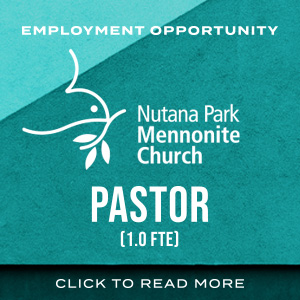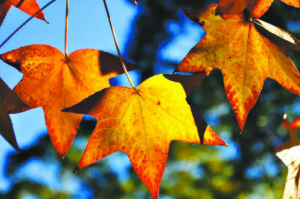In the course of my work, which includes serving as books editor, I do a lot of reading as well as writing—see CM’s Books issue (November 2024)—but at the end of each day, I also enjoy reading books for pleasure.
For a number of years, I have shared a list of the best books I’ve read in the previous 12months. This year, I thought I would share my list with Canadian Mennonite readers.
Usually I do a top 10 list, but it was hard to narrow the books down, and also I kept discovering books that paired beautifully together. So here is my list of paired books for 2024.
The Dean’s Watch/Holiness Here
The Dean’s Watch by Elizabeth Goudge was first published in 1960. The book is set largely in the 1870s in a British town dominated by a massive cathedral. The story takes place around the lives of those who live in the shadow of the cathedral, and most particularly in the relationship between a timid watchmaker and the towering dean of the cathedral.
This book is all that Christian fiction has ever wanted to be, truly inspiring the reader to want to be a better person with the help of God.
I didn’t want this book to end, and I gave it to a friend afterwards, who in turn passed it on. It’s heartwarming and interesting and has no religious sentimentality. It’s a holy book about holy people who are anything but prissy and lifeless.
That brings me to Karen Stiller’s latest book, Holiness Here: Searching for God in the Ordinary Events of Everyday Life. Karen writes beautifully and with a great deal of humanity about a topic that may seem dusty and even outdated. There are matters she sees as pertaining to holiness that I never thought of in that light. I read this book when it was still a manuscript, and then again, devotionally, a chapter a day, allowing its poetic, holy words to seep into my life.
I, Julian/For Thy Great Pain Have Mercy on My Little Pain
Many years ago, I put a signature line at the bottom of my emails where it has stayed ever since. It’s a line from the writing of 14th century Christian mystic Julian of Norwich to whom God said: “All shall be well, and all manner of thing shall be well.” It’s a message Julian needed to hear; it’s a message I need to hear often. I was, therefore, delighted to see two novels come out this year, imagining Julian’s life.
The two books merge in my mind, along with Julian’s original writings, but both are very strong. For Thy Great Pain is not just Julian’s story but goes back and forth between Julian and another narrator, Margery Kempe, a highly unusual, real-life contemporary of Julian, who was believed in her time to be either mad or very close to God.
I, Julian is written by Claire Gilbert who is the director of the Westminster Abbey Institute and an expert on Julian. Gilbert’s writing is luminous as she fully inhabits Julian. I recommend both books highly.
The Big Sleep/Mr. Penumbra’s 24-Hour Bookstore
Over the past number of years, when my husband and I have gone on road trips, we try to find a book to listen to that is set in the place we’re visiting. This spring, we visited our son in California, driving from Los Angeles to San Francisco. These were the two books we listened to. The Big Sleep was the first Raymond Chandler book—what’s called noir fiction, about a hard-boiled detective investigating a crime. It’s set in and around Los Angeles. What delighted me about this book is that Chandler is the absolute master of the metaphor—to the point of excess. We laughed at his fantastic descriptions.
The other book, Mr. Penumbra, is set at a magical bookstore in San Francisco. It’s a wild ride with a 500-year-old secret society and its ongoing challenge between books and new forms of technology.
I’m not certain you will love these books, but I highly recommend reading books set in the places you visit (or live!). I should also mention that we visited the famous Chez Panisse restaurant in Berkeley, just outside San Francisco, so in advance of the trip, I read a biography of its founder, Alice Waters. It added to my enjoyment of the trip.
Us/The Art and Science of Connection
Here’s some non-fiction I highly recommend. Terrence Real is a therapist who has brought many couples back from the brink of divorce, but his approach is one that any relationship could benefit from.
Rather than pointing fingers (or allowing couples to point fingers at one another), in Us: Getting Past You and Me to Build a More Loving Relationship, Real blames our modern, individualistic, patriarchal society and both encourages people to take responsibility for themselves and to come to a deeper place of intimacy. An excellent read.
As is The Art and Science of Connection: Why Social Health Is the Missing Key to Living Longer, Healthier, and Happier by social health expert, Kasley Killam. If Us is about marital relationships, this book is about developing a wider range of connected relationships. This is a very readable book that recognizes we aren’t all extroverts, but that well-being is not only mental, physical and spiritual but also social. This practical book has been described as an antidote to the loneliness epidemic.
The Gentle Art of Death Cleaning/A Room of One’s Own
This pairing might seem like a stretch, but bear with me as both of these books are essentially about creating space and time.
Several months after my father died last winter, my mom providentially found a condominium. This meant clearing out the large house in which my parents had lived for nearly 30 years. It was a group project, and a massive one.
As a consequence, I began looking around my own home and seeing what’s no longer necessary. It’s a different approach to living more with less, finding new homes for still-good stuff. We’ve taken many carloads to MCC’s Thrift on Kent in Kitchener, Ontario–some my parents’ belongings and some ours.
In the midst of this process, I heard about the concept of Swedish death cleaning and realized that was exactly what we were doing. This book, The Gentle Art of Death Cleaning written by Margareta Magnusson, an elderly woman (“somewhere between 80 and 100”), encourages its readers to tackle this process before it is a necessity or becomes someone else’s task. Magnusson paints a picture of joy at sharing beloved possessions with beloved people, and shows that having fewer possessions can lead to a freer, healthier life. (I do regret giving away the red towels, though…)
A Room of One’s Own is a phrase often used by women seeking space and time to write. This year, I decided it was time to read the book itself. It turned out to be a series of lectures given by Virginia Woolf. It was charming. It was insightful. It made me realize that people a hundred years ago were struggling with many of the same challenges. A worthwhile read.
Longbourn/Snobbery with Violence
I read 71 books this year, and many were either detective fiction or historical fiction. The first one here is historical fiction, and the second is both. They are the cream of the crop.
Longbourn, as the title will suggest to the most avid Jane Austen fan, is the name of the house in Pride and Prejudice. There is a trend among contemporary authors to find a minor character in a major novel and to tell their story. This is done with varying degrees of success.
I’m pleased to say that Longbourn is highly successful, taking the point of view of the servants of the Bennet family. This was a fascinating reversal of expectations for this reader, recognizing the challenges and the very real lives of those whose chief purpose among the main characters is to serve and not be seen.
Many “fan fiction” novels have a tendency to try to recreate the tone of voice of the original author. Not Longbourn. Its author, Jo Baker, creates an absolutely new and strong tone that suggests nothing of Austen at all, while still inhabiting the P&P universe. A wonderful read.
I picked up Snobbery with Violence in a Little Library, and quickly realized I was in the hands of a strong writer, M.C. Beaton, who wrote 79 books in her lifetime, including four books in this series. Though the books are Edwardian mysteries with a pair of (male and female) adversarial detectives, there’s nothing silly or dated about the novels. They are well-told mysteries with compelling characters. A delightful find.
The Signature of All Things/The Great Divide
These books need at least a PG rating and perhaps they aren’t for everyone, but they really were among my favourites of the year. There is also a certain similarity between them: both feature tropical locations where plants and newcomers in a foreign land play significant roles. Both also feature large casts of characters. Both tell highly ambitious, sweeping stories.
I never thought I would recommend an Elizabeth Gilbert book after I gritted my teeth through her memoir, Eat, Pray, Love. But The Signature of All Things is a successful foray into fiction for Gilbert. The book follows a family of botanists and plant collectors in the eighteenth and nineteenth centuries, their ambitions, desires and quest for knowledge driving them. It is also very appropriately critical of the colonial Empire-building impulses.
So too is The Great Divide, a novel about the creation of the Panama Canal. This book explores the intersecting stories of those whose lives were utterly changed by the construction of the canal. The book is not so much informative about canal building, as about recognizing the impact of such a project. It was hard to put this book down, and I loved the way the stories came together. A really great new book.
What are you reading? What would you recommend to other readers?









Leave a Reply
You must be logged in to post a comment.